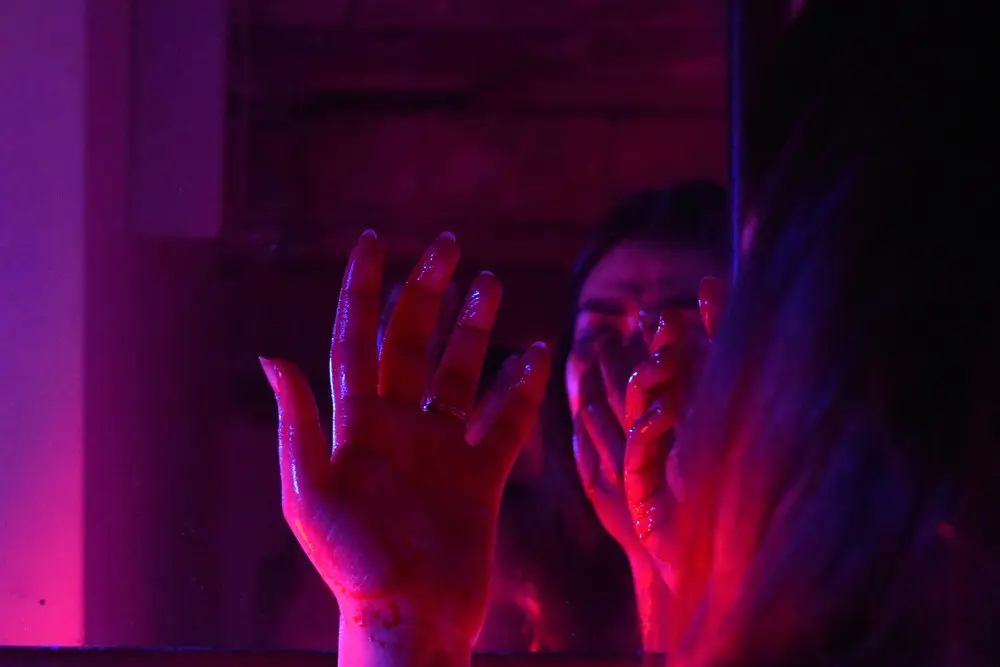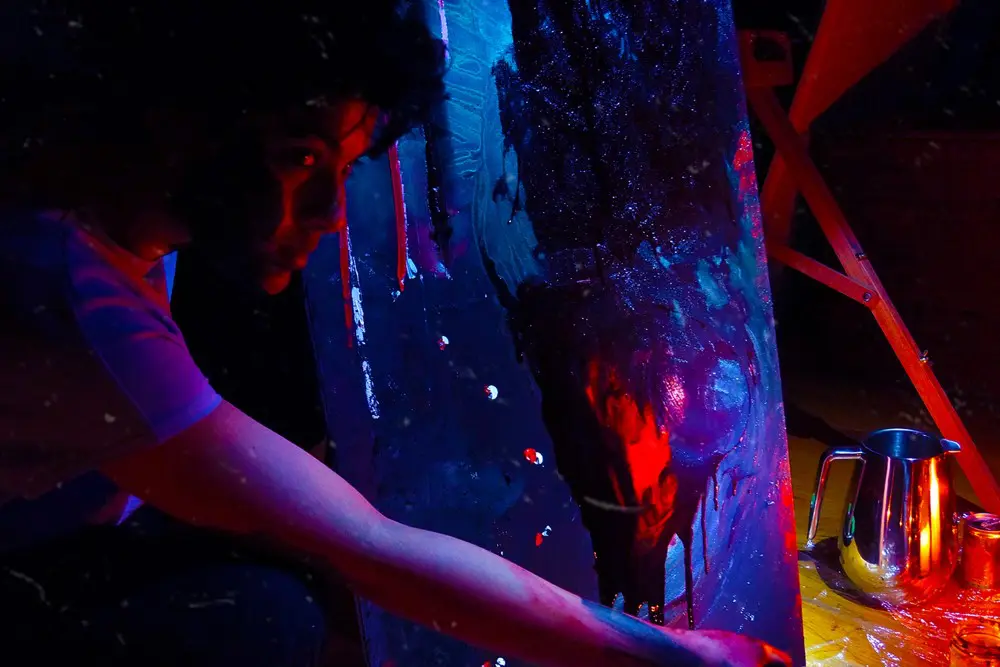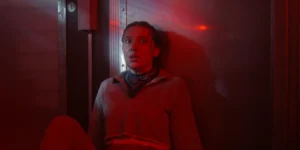Summary
Striking and emotional art film from auteur K/XI about an artist haunted by a murdered young woman, and about the justice painfully absent in the stories of too many Asian women.
I’m familiar with vengeful female spirits from Korean and Japanese cinema, though hadn’t come across the “churail” until reading about and now watching Black Lake. Apparently, in Southeast Asia, “churail” is the name given to the spirit of a woman who comes back after a tragic or brutal death (in very general terms); and Black Lake combines this legend with the real-life tragedies of murdered women in India and Pakistan to produce a thought-provoking and colorful ghost story.
I’m actually reluctant to call Black Lake a film. K. Pervaiz – named K/XI in the film’s credits and on her own online media, so I shall too from here on – has created a poem out of visual art and music, thus making what could have been a short film in other hands a full-length feature. I say “created”, because she is an auteur in respect of this piece: she is writer, director, producer, director of photography, as well as lead actor and a few other responsibilities. All in all, it is a remarkable achievement and a fascinating piece of art to watch; especially when one views it as just that: art which expresses feelings and disseminates issues that many of us might never know about or care about otherwise.
Black Lake is unlike most other films I’ve seen. It’s almost stream-of-consciousness visual style reminded me somewhat of She Dies Tomorrow, but only just. There are hardly any characters, plot, or dialogue: but it screams out plenty of story via colors, music, visions of other lands, and blood. The central character is Aarya (played by K/XI), a British Asian artist spending time in rural Scotland with the intention of immersing herself in painting. Her Auntie Ayaneh (Aditi Bajpai), whose house Aarya is staying in, has left her a scarf from Pakistan as a gift. Neither of them considers the scarf’s origin until bad dreams start, and gradually a churail comes into Aarya’s life, the remains of a young woman who had been raped and killed, with barely any acknowledgment in the media.

There is a point during the film when Aarya suggests to her aunt there must be countless churail out there if they are genuinely brought about by the violent deaths of young women. This is essentially the message in the film, and one full of pain and anger: many, many women and girls are victims of rape and murder, and they often go unnamed in news reports, and insufficient numbers get any justice via the legal system. Black Lake does not look at the reasons for these crimes – I don’t know if they are primarily honor, caste, or good old-fashioned misogyny – and the cause is not the issue: the issue is that the number, the stories, and the names of these victims are kept discrete and rarely shared. The churail in the story is crying out to be acknowledged and for people to know her plight. Black Lake is dedicated to the memory of Jyoti Singh, a 23-year-old student who was gang-raped and tortured on a bus in South Delhi in 2012, and shortly after died: the incident and its impact formed the key catalyst that led to Black Lake.
Black Lake was filmed in both Pakistan and the UK, and the locations are used very profoundly. It is very clear that the trauma evoked by the former owner of the scarf is drawing Aarya back in her mind to Pakistan, away from the peace she has found in her Scottish sanctuary. The cinematography is gorgeous too; and not just the landscapes: I loved some of the interior close-up shots, of damp skin, paint, and fabric. Oh, and blood. As Aarya became more captivated by the young woman’s plight, it inspired her painting in dramatic style, which brought to mind M.F.A. and The Devil’s Candy. Actually, there are other films referenced both in terms of style and explicitly, with the Eraserhead t-shirt, for example, and (the equally colorful) La Planète sauvage on her TV. What I’m saying is this film has plenty for the senses, as well as for the intellect.
I have mixed feelings about the soundtrack. BurningTapes has produced a score blending electronic and more traditional influences, with varying intensity as the screenplay demands. It is enjoyable and of great quality, for sure… but in my opinion, there is too much of it. Music virtually fills the film, and as a viewer, I felt saturated by it.
I’m not going to forget it, though. I doubt I’ll forget the colors, and absolutely certain I won’t forget the name Jyoti Singh.




